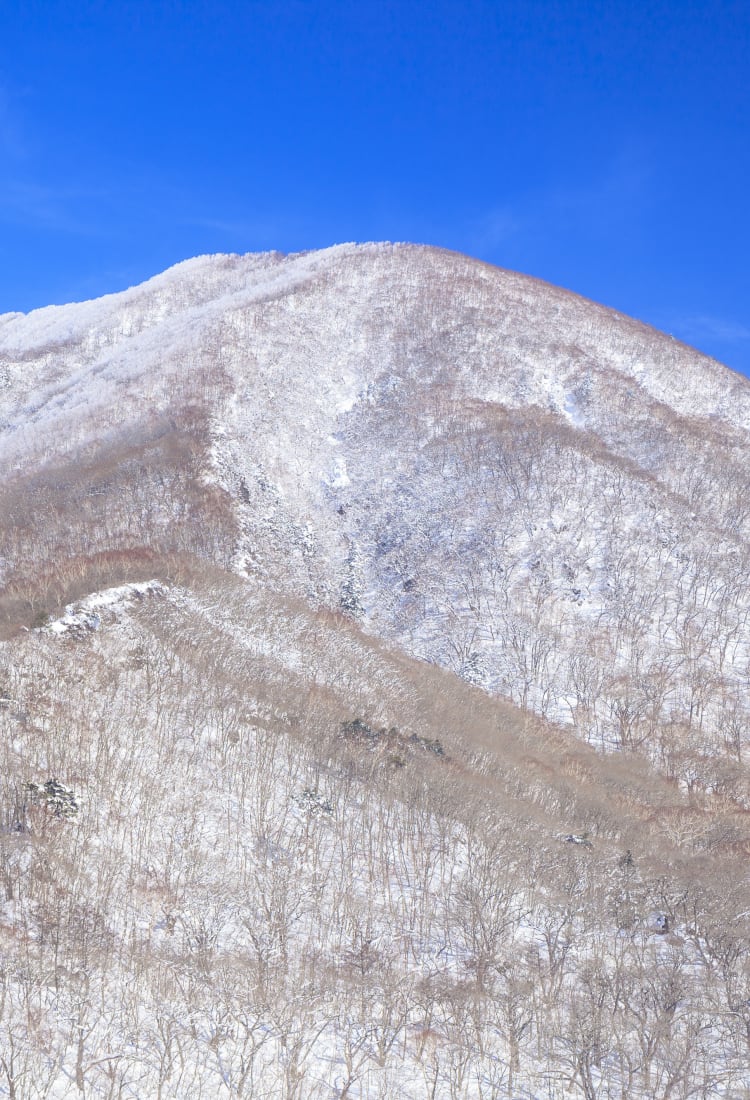

GUNMA Maebashi & Akagi Gunma’s leafy, literary capital also has Japan’s largest river running through it
Gunma's leafy, literary capital also has Japan's largest river running through it
From the moment you exit the train station and see Zelkova Boulevard, you will understand why Maebashi calls itself the City of Greenery. The Tonegawa, the largest river drainage area and the second longest in Japan, also runs through the city.
Maebashi sits at the base of Mt Akagi , the symbol of Gunma . A famous summer retreat, this mountain was loved by great writers such as Naoya Shiga and Ryunosuke Akutagawa.
Don't Miss
- A stroll along the Hirose River, a tributary of the Tonegawa
- Mt Akagi's picturesque crater lakes: Konuma, Kakumanbuchi, and Onuma
- The taste of some great pork-based dishes
How to Get There
You can get to Maebashi directly via JR or by taking a Shinkansen and then a local line.
From Tokyo Station , ride the Joetsu/Hokuriku Shinkansen to Takasaki Station, which takes an hour. From there, take the Ryomo Line to Maebashi Station (15 minutes). Alternatively, you can ride the JR Urban Rapid service from Ueno to Maebashi, which takes two hours.
Quick Facts
A powerful wind that rolls over Mt Akagi from the north keeps Maebashi one of the sunniest places in Japan
The Meiji Emperor and members of the Imperial family stayed in the Rinkokaku

Parks and floral assets
Maebashi's many parks include Shikishima—known for its rose garden with 7,000 roses in 600 varieties—trendy cafes, a pine forest of around 2,700 pines, and a botanical garden. You can row boats shaped like swans on a large, picturesque pond in the park. Gunma Flower Park has a wide range of flowers all year.
Nearby is the Sericulture (Silk Fabric Culture) Memorial Museum. Sericulture was once Maebashi's main, very prosperous industry. On exhibit are tools and instruments used for sericulture and the silk-spinning industry.

A river of poetry
The Hirose River flows through the heart of Maebashi. Walk along the paved sidewalks by the river, and you will come across several statues related to literature. Inspired by the beauty of the weeping willows and other greenery over the Hirose River, numerous writers began or honed their craft here.
Sakutaro Hagiwara, one of Japan's most celebrated modern poets, was born in Maebashi. The Maebashi Museum of Literature holds many of his works as well as those of other prominent poets and writers.
Hatsuichi Matsuri (First Market Festival)
A unique festival held on January 9 each year is linked to the daruma doll, a lucky charm. The festival is the perfect place to find Daruma dolls of unique colours and sizes.


A popular trio of peaks
Mt Akagi's long, gentle slopes are visible from afar. Along with Mt Haruna and Mt Myogi, this symbol of Gunma is also one of the Jomo Sanzan, the Three Famous Mountains of Gunma. In the spring, you can enjoy many varieties of flowers on the mountain, especially azaleas, and the fall colors are a big draw in mid-October.
The crater lakes Konuma and Kakumanbuchi are located at the summit, but the biggest, Lake Onuma, attracts many visitors all year. During the summer, visitors can enjoy camping, fishing, and boating, while in the winter, you can bore holes in the frozen surface of the lake and fish for lake smelts through the ice.




Falls for all seasons
The 32-meter-high Fudo Falls offer gorgeous natural beauty throughout the year. In the summer, enjoy the cooler air and take the hiking trail to the falls. In the autumn and spring, the contrasting colors around the falls are magnificent. During the winter, you will encounter a magical scene as the falls freeze and become surrounded by icicles.

Mountain cherry blossoms
The Akagi Nanmen Senbon-Zakura Festival takes place every spring along a two-kilometer stretch lined with 1,000 cherry trees in bloom. You can get up close to appreciate the fragile beauty of cherry blossoms.



A museum in a stunning natural setting
The Gunma Museum of Modern Art is located in Takasaki City. The art exhibitions are stimulating and the entrance fee is low, but what sets this museum apart is its location in the Gunma Forest. You can relax among the tall trees or out in the vast open grassy area. Take a stroll along the walking paths through the forest.

Dancing at the Kiryu Yagibushi Festival
There are special dances for each region of Gunma, and you will see one of them at the Kiryu Yagibushi Festival in Kiryu during the first Friday, Saturday, and Sunday in August. This energetic dance is set to the rhythm of barrels being pounded and umbrellas twirling in the air.






























































